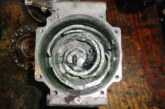
Getting to the root of a commercial vehicle problem as quickly as possible is essential – after all, the quicker you can diagnose and fix the problem, the quicker you can get the vehicle back on the road! Here, Tony Zeal, Training Manager at CTEK, explains the importance of battery support during vehicle diagnostic work.
Our research has identified that one in three commercial vehicles arriving in the workshop has a battery problem, a threat that could cause technicians problems when undertaking diagnostic work on a commercial vehicle.
Diagnostic activity requires the ignition to be switched on without the engine running. This means that during programming, the vehicle’s systems are operated solely from the power of the battery.
Therefore, fault-finding with diagnostic tools should only be carried out whilst the vehicle is connected to an adequate and stable source of power. Battery support helps to avoid inaccurate data being sent back to the diagnostic device. Fluctuations in battery voltage – which can easily occur if the battery is not adequately supported – can also cause additional codes to appear.
Battery support is also important in terms of saving technician time, insuring against costly programming failures and preventing potentially costly damage to the ECU.
Indeed, we are finding that in more and more cases, the vehicle will only open up and communicate with diagnostic equipment if it can see a minimum voltage across its system. In many cases, it’s a specific voltage level, too – something that can only be achieved through battery support.
My advice is that any diagnostic work undertaken should be done so with battery support. It is really important that you use the right equipment to maintain battery performance. Slave batteries and boost packs can be unreliable, and may struggle to cope with sudden increases in current demand. Standard battery chargers are not recommended either, as they can increase battery voltage beyond normal operating levels, affecting diagnostic procedures and potentially damaging sensitive equipment.
The MXTS 40 from CTEK provides a stable voltage and up to 40A (12V mode) and 20A (24V mode) of fully regulated power to prevent loss of charge as well as damage to the battery, so it’s ideal for a wide range of commercial vehicles with average power consumption. If even more power is required, the MXTS 70 provides up to 70A of battery support (35A) in 24V. This unit provides the ability to cover all vehicles, including high specification vehicles with large flash programming demands.
Both CTEK units offer complete flexibility for the user, with selectable voltages to meet the precise needs of each individual vehicle.
So, in summary, a stable battery voltage protects against battery failure during the diagnostic process, and ensures that the technician can quickly, and without interruption, generate diagnostic results that facilitate an accurate, efficient and safe repair.








